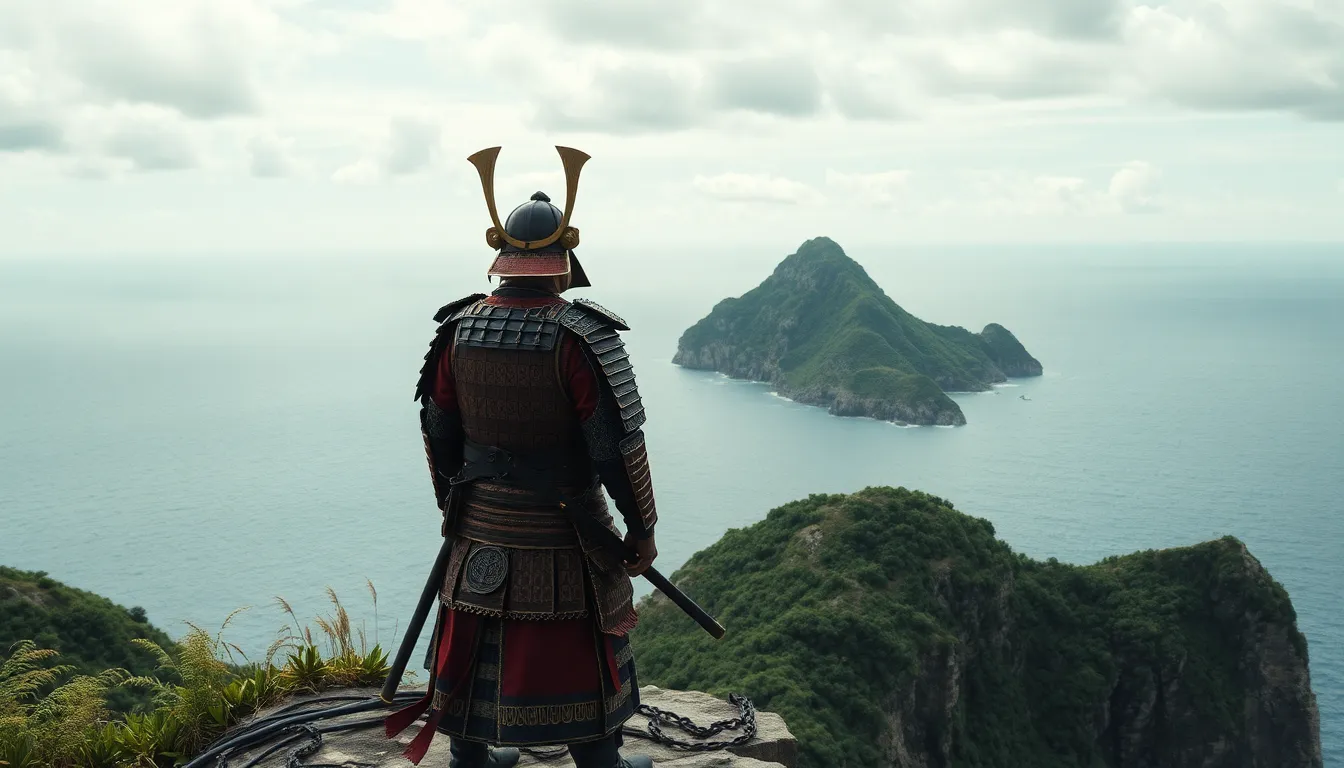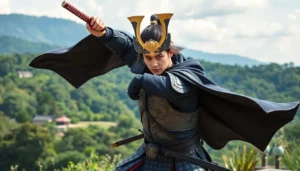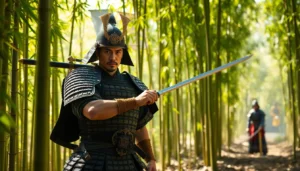Table of Contents
ToggleIn a world where samurai legends clash with the pixelated realms of video games, Ghost of Tsushima stands out like a cherry blossom in full bloom. This action-adventure title not only delivers breathtaking visuals and thrilling gameplay but also takes players on a cultural journey through feudal Japan. But how much of that journey is rooted in reality, and how much is just a clever blend of fantasy and folklore?
As players don the armor of Jin Sakai, they might wonder if they’re stepping into a history lesson or just a beautifully crafted dream. With its rich tapestry of cultural elements, the game raises questions about authenticity and representation. Is it a love letter to the samurai spirit or a playful romp through a historical playground? Buckle up as we dive into the cultural accuracy behind Ghost of Tsushima, where history meets heroics in a way that’s both entertaining and enlightening.
Overview of Ghost of Tsushima
Ghost of Tsushima stands out as an action-adventure game developed by Sucker Punch Productions. Set during the late 13th century, the game immerses players in the Mongol invasion of Japan. Players step into the shoes of Jin Sakai, a samurai warrior who embarks on a quest to protect Tsushima and preserve his family’s honor.
Gameplay combines stealth, combat, and exploration, offering a diverse experience. Stunning visuals highlight the beauty of Tsushima’s landscapes, showcasing lush forests, rolling hills, and picturesque villages. Realistic sound design enhances the gaming experience, immersing players in the world of feudal Japan.
Cultural accuracy remains a crucial aspect of the game. Traditional samurai values and Japanese customs are woven into the narrative. Jin learns not only to fight but also to embrace the way of the ghost, suggesting a transformation in his approach to warfare. Historical accuracy does spark debate among players. Some appreciate the respectful portrayal of samurai culture, while others question the game’s liberties with historical events.
The portrayal of characters offers depth and complexity. Supporting characters reflect the various classes and roles that existed in feudal Japan. Each character contributes to the exploration of moral dilemmas and the samurai code.
Ultimately, Ghost of Tsushima serves as both an engaging action-adventure game and a cultural representation of a significant period in Japanese history. The balance between historical accuracy and the fantasy elements invites players to reflect on their experiences within the game.
Historical Context

Ghost of Tsushima immerses players in a richly detailed representation of feudal Japan during the Mongol invasion of the 13th century. This era shapes the narrative, creating a platform for examining the cultural complexities and values of the time.
Feudal Japan and Its Influence
Feudal Japan established a social hierarchy dominated by samurai, who committed to serving their lords with loyalty and honor. Samurai culture emphasized bushido, a code of morality stressing bravery, honor, and skill in battle. The landscape of Tsushima Island, an actual historical location, reflects the cultural and geographical significance of Japan during this period. Japanese customs, such as rituals and traditional celebrations, enhance the authenticity of the setting. Its detailed portrayal raises awareness of the cultural backdrop that influences Jin Sakai’s character development and the overarching themes of sacrifice and duty.
Key Events and Figures
The late 13th century marked significant events, including the Mongol invasions aimed at conquering Japan. Kublai Khan led the Mongol Empire, orchestrating these invasions with a strategy that involved overwhelming force. The defense of Tsushima Island was crucial in delaying the Mongol advance. Figures such as samurai leader Takeda Shingen exemplify the strength and valor associated with the samurai class. Jin Sakai embodies these historically rooted ideals as he navigates his dual identity. The narrative intertwines these historical events and figures, allowing players to engage with both the factual and the fictional realms of this tumultuous era.
Cultural Representation in Ghost of Tsushima
Cultural representation in Ghost of Tsushima plays a vital role in immersing players in the world of feudal Japan. The game strives for authenticity while weaving historical details into its narrative.
Japanese Aesthetics and Architecture
Japanese aesthetics and architecture shine throughout Ghost of Tsushima. Players encounter lush landscapes punctuated by traditional structures such as pagodas and tea houses. Environments reflect the natural beauty of Tsushima Island, showcasing vibrant cherry blossoms and serene rice fields. Wooden bridges connect various regions, symbolizing harmony with nature. Artifacts and shrines enhance the traditional feel, providing context to the samurai’s values. Attention to detail captures the essence of Japan’s culture while spotlighting its rich history. Incorporating realistic weather effects and day-night cycles further amplifies players’ experiences and reinforces the game’s cultural integrity.
Language and Dialogue Authenticity
Language and dialogue in Ghost of Tsushima are crafted with care for authenticity. Characters converse in Japanese, allowing players to immerse themselves fully in the era’s linguistic landscape. Voice acting features talented performers who bring depth to characters, ensuring emotional connections resonate. Subtitles provide context for those unfamiliar with the language, maintaining accessibility without compromising immersion. Dialogue reflects historical norms, showcasing proper honorifics and respectful exchanges. The game’s commitment to language authenticity enhances its representation of feudal Japan while inviting appreciation for its cultural nuances. This linguistic fidelity contributes significantly to the overall experience, grounding the narrative in reality.
Critiques of Cultural Accuracy
Cultural accuracy in Ghost of Tsushima has been both praised and criticized. Many players discuss how historical facts blend with fictional elements, leading to common misconceptions about the samurai era.
Common Misconceptions
Some players believe the game’s portrayal of samurai represents a complete historical narrative. However, reality shows that the samurai culture was complex, with varying beliefs and practices throughout different regions. Others misinterpret the bushido code as a singular, unchanging doctrine, while it often varied among individual samurai and clans. Players frequently overlook how the game simplifies cultural aspects for gameplay purposes, which can distort understanding of feudal Japan’s social dynamics.
Community Reactions
Reactions from the gaming community highlight a mix of appreciation and criticism. Many players express admiration for the game’s visuals and dedication to Japanese aesthetics. However, vocal critics argue that the game occasionally sacrifices historical fidelity for entertainment. Forums often buzz with discussions about cultural representation, with some players advocating for a more nuanced depiction of Japan’s past. The enthusiasm surrounding the game showcases a desire for authentic storytelling while allowing room for debates on the balance between accuracy and artistic freedom.
Positive Aspects of the Game
Ghost of Tsushima showcases elements that enhance cultural appreciation and understanding of feudal Japan. The game immerses players in intricate details, promoting a deeper connection to the era’s values and practices.
Cultural Awareness and Education
Cultural awareness flourishes through the game’s depiction of samurai ethics and traditions. Players learn about bushido, the samurai code emphasizing honor and loyalty. Characters exemplify these principles, engaging in moral dilemmas that echo real-life samurai challenges. Artifacts and locations, such as shrines and battlefields, serve as teaching tools, showcasing feudal Japan’s historical context. Events like the Mongol invasions add educational depth, bridging the gap between history and gameplay. Through exploration, players gain insights into ancient Japanese customs, enriching their understanding of the culture.
Promotion of Japanese Culture
Promotion of Japanese culture is evident in the game’s design and aesthetics. Players experience traditional architecture, lush landscapes, and vibrant flora, reflecting Japan’s rich heritage. The incorporation of language and dialogue contributes to an authentic experience. Characters speak in Japanese, immersing players in the linguistic environment of the time. Festivals, clothing, and rituals enhance cultural representation, allowing players to appreciate Japan’s artistic contributions. Ghost of Tsushima acts as an ambassador for Japanese culture, inspiring interest and respect among global audiences.
Ghost of Tsushima serves as a remarkable bridge between historical accuracy and engaging gameplay. Its portrayal of feudal Japan immerses players in a world rich with cultural significance while inviting them to explore the complexities of samurai life. The game’s dedication to authentic language and traditional customs enhances the experience, fostering appreciation for Japan’s heritage.
While some critiques highlight the blend of fact and fiction, the game ultimately sparks valuable conversations about cultural representation in gaming. Its stunning visuals and compelling narrative not only entertain but also educate players about a pivotal era in history. By navigating the delicate balance between artistic freedom and historical fidelity, Ghost of Tsushima stands as a testament to the power of video games in promoting cultural understanding and respect.







